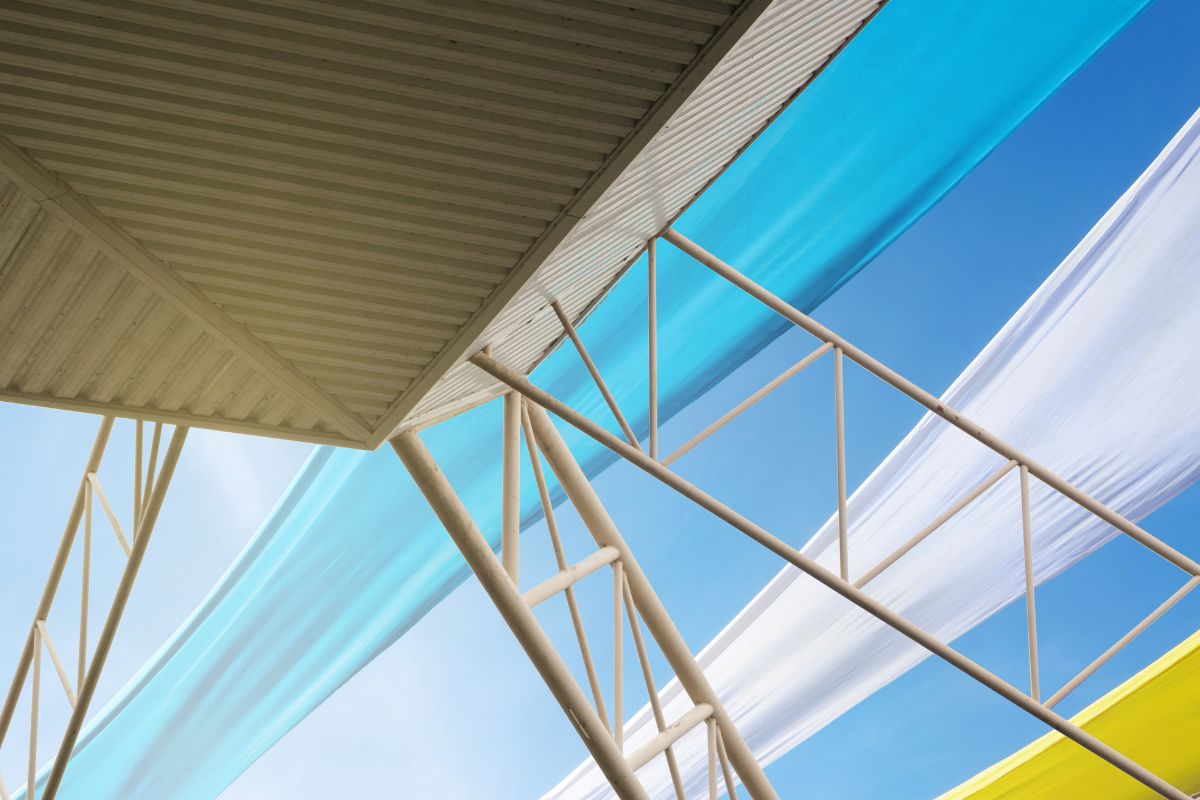Purlins, often overlooked components of roof structures, are horizontal beams traverse the roof’s length, providing essential support for the roof covering. Their role is fundamental, as they evenly distribute the roof’s weight, preventing it from sagging or collapsing. Purlins come in various materials, each with distinct advantages and disadvantages. For instance, wood offers a traditional aesthetic but may be susceptible to rot, while steel purlins provide durability but require protective measures to prevent corrosion.
Signs Of Purlin Wear And Tear
Recognizing signs of wear and tear on purlins is crucial to make sure of the structural integrity of a building. A sagging roof is a prominent indicator of purlin issues, often resulting from their inability to support the roof load adequately. Metal purlin can exhibit corrosion, particularly in regions with high humidity or exposure to salt. In contrast, wooden purlins may develop cracks, splits, or rot.
Loose fasteners, such as bolts, nuts, or screws, can undermine the stability of purlin, posing a potential risk. Additionally, moisture-related problems, such as water stains and rot in wooden purlins or corrosion in metal ones, should not be underestimated. Lastly, any visible deformities in purlins, such as bending or twisting, should be addressed promptly.
Cleaning And Inspection
Regular cleaning and inspection routines are the foundation of purlin maintenance. Clearing debris from the roof surface, like leaves and branches, is essential, as debris can trap moisture and accelerate deterioration. When dealing with metal purlins, a vigilant eye should be kept out for signs of rust and corrosion, which can weaken the purlins over time.
Wooden purlin, on the other hand, require a close examination for cracks, splits, or any indications of rot, especially at the joints and connections. Ensuring the tightness of fasteners that secure the purlins to roof trusses is crucial to preventing shifting or instability. Furthermore, regular checks for pest infestations, such as termites, should not be overlooked, as these can severely compromise the integrity of wooden purlins.
Painting And Coating
Applying paint or protective coatings is crucial in purlin maintenance, particularly for metal purlins. These protective measures serve several purposes. Firstly, rust-resistant paint applied to metal purlin creates a barrier that shields them from the corrosive effects of moisture and oxygen, significantly reducing the risk of corrosion.
Coatings like epoxy or zinc can be applied to steel or aluminum purlins, further enhancing their durability and resistance to environmental elements. Wood preservatives are recommended for wooden purlins to prevent rot and decay, which can occur due to prolonged exposure to moisture and pests.
Proper Drainage
Effective drainage systems are essential for safeguarding purlins against water-related damage. Ensuring that gutters and downspouts are debris-free is crucial, as this allows rainwater to flow away from the roof efficiently. Installing drip edges along the roof’s edges is another preventive measure.
Drip edges are metal strips designed to direct water away from the fascia and purlin, preventing water-related issues, such as moisture penetration and rot. Additionally, checking and adjusting the roof’s pitch, if necessary, can contribute to proper water flow away from the purlins, reducing the risk of water-related problems.
Regular Maintenance Schedule
Establishing and adhering to a regular maintenance schedule is paramount to preserving the integrity of steel purlins. A bi-annual inspection, typically conducted in the spring and fall, enables the early detection of issues before they escalate. This proactive approach helps prevent costly repairs in the future. An annual roof cleaning involving the removal of debris and a thorough check of drainage systems is a necessary part of routine maintenance.
Depending on the type of coating applied, repainting or recoating may be required every few years to maintain protective barriers. Immediate repairs are crucial when issues are identified during inspections, such as rust, corrosion, or cracks, as prompt action can prevent further damage and extend the lifespan of purlins.
Consulting Professionals
While homeowners can handle many aspects of purlin maintenance, some tasks demand the expertise of professionals. In cases of significant structural issues, such as severe sagging or deformities in purlins, consulting a structural engineer or a roofing specialist is advisable.
Specialized coating applications may also necessitate professional assistance to ensure they are correctly administered, maximizing their effectiveness. In situations where termite infestations in wooden purlins are suspected, prompt contact with a pest control expert is essential to mitigate potential damage and preserve the structural integrity of the purlins.
Conclusion
Maintaining purlins to extend a roof’s lifespan and guarantee the entire structure’s safety and stability is essential. Regular cleaning, inspections, and protective measures can prevent issues and lower the risk of costly repairs. Remember, a little maintenance today can save a fortune in the future. Neglecting purlin can lead to structural problems, so provide them with the care and attention they require to ensure your roof stands strong for years.
















